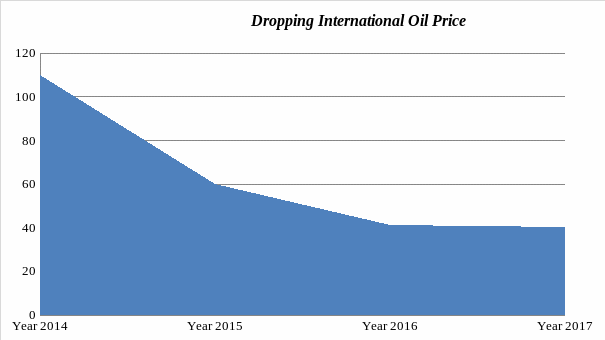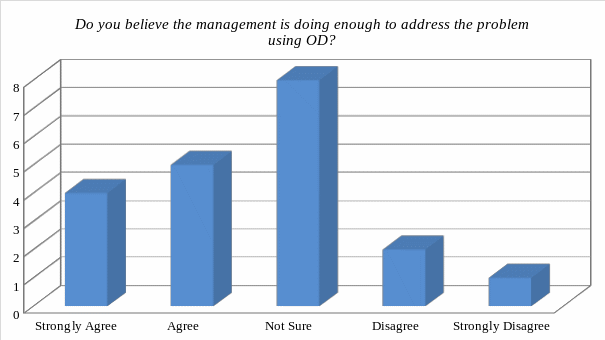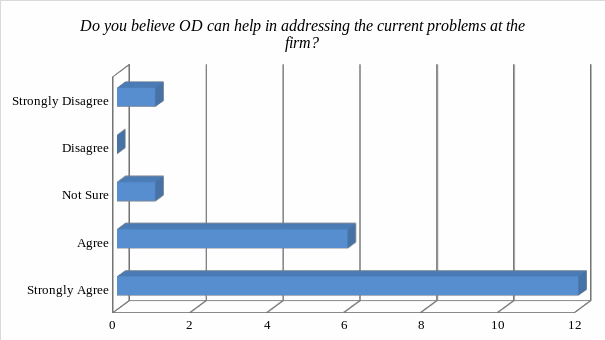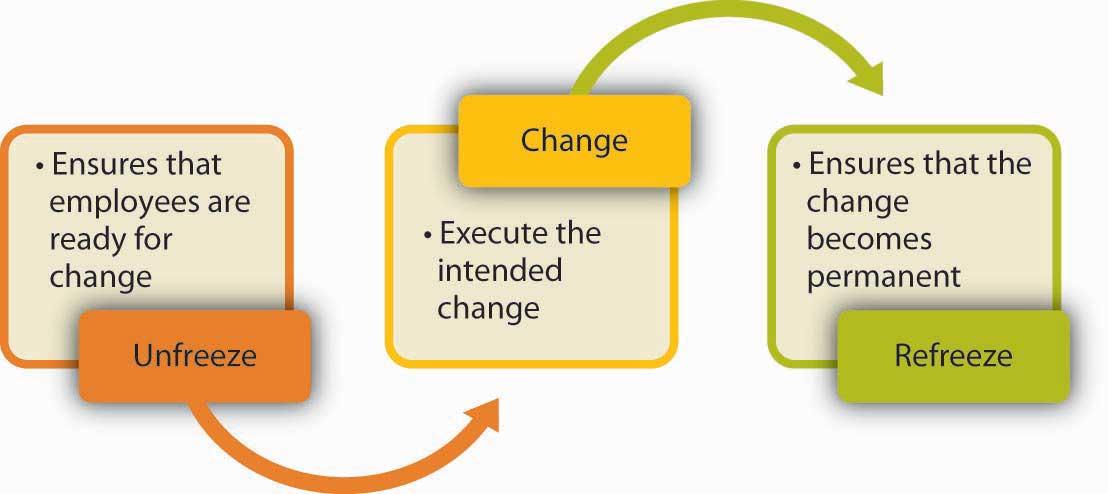Abstract
Organizational development is a concept that has gained popularity in the current competitive business environment. Companies are struggling with environmental forces and their success depends on the strategy that they embrace. Organizational development proposes a way in which companies can deal with these forces, especially when it comes to managing change. Abu Dhabi National Oil Companies is one of the leading companies in the United Arab Emirates. The company is faced with various challenges, the top of which is the dropping oil prices that strain its resources. The paper looks at how the company can use the concept of organizational development to overcome these challenges.
Introduction
Organizational development is increasingly becoming a major area of focus for many large organizations, especially those operating in the global market. Developed in the 1930s, the concept of organizational development has become so relevant in the current challenging business environment of today (Cummings & Worley, 2013). Firms find themselves operating in highly competitive markets where they cannot afford to ignore the change. They have to understand the changing environmental changes and align the workforce accordingly to achieve the best results in the market. Abu Dhabi National Oil Company, popularly known as ADNOC, is one of the largest companies in the United Arab Emirates. The company has registered impressive performance for over 40 years that it has been in operation. Within that period, it has had to make several changes in various departments to ensure that it meets the changing needs in the market. According to Yuan (2018), the international oil and gas market has been marred with numerous challenges, the top of which is the dropping price of the hydrocarbon products. Different companies have tried different ways to deal with this problem. ADNOC has been using strategies that it considers most effective in handling the problem and other environmental changes that it encounters in the market. The Organizational Development Division of this company has been at the forefront in dealing with these forces. It is important to look into the real-life matters that this department has been dealing with to ensure that the human resource of this firm is molded in line with the changing environmental forces.
Purpose
ADNOC is currently one of the leading employers in the United Arab Emirates. According to Sarbu (2014), many companies operating in the hydrocarbon market are struggling to restructure their internal operating systems in response to the changes in the market. The industry is very volatile, with oil prices becoming impossible to predict. ADNOC is one of the companies struggling with this volatile market. The purpose of this paper is to examine the nature of the current change at this organization with the view of helping the management and employees to work more efficiently than what is currently the case. The paper will offer guidance to the Organizational Development Division of ADNOC so that it can incorporate changes in the market in its normal market operations. The researcher will review the existing literature to have a better understanding of the topic. The researcher will then engage personnel at the Organizational Development Division of this company to understand the approaches used. The information collected will make it possible to come up with recommendations that will outline changes that the firm needs to embrace. The primary focus was to find a way in which the department can help the firm to overcome the current problem of falling international oil prices.
Review of Literature
Organizational development emerged in the 1930s when psychologists and human resource managers realized that organizational processes and structures have a direct impact on employees’ behavior and motivation (Anderson, 2013). It became apparent that the systems and structures they are exposed to and the culture that is propagated influences their approach of handling various tasks in the organization. In modern society, the concept has become even more relevant than it was in the past. Technology has brought about so many changes in the way firms operate and competition has forced firms to come up with unique products and systems to gain a competitive advantage over rival companies. According to Anderson (2013), the key concepts of organizational development include organizational climate, culture, and strategies. It is necessary to look at each of these concepts.
Organizational Climate
According to Sarbu (2014), organizational culture is a system of shared values, beliefs, and assumptions that govern the behavior of people in an organizational setting. It starts with the attitude of the people towards various issues within the organization. Mohamed (2013) observes that the attitude that employees embrace is often defined by the attitude of the top managers and the management approaches that are used. The employees will embrace a relaxed attitude towards a given issue if they realize that the top managers are not keen on protecting it. For instance, companies such as Apple Inc. and Samsung Corporation have become successful because they have learned the value of meeting the needs of their customers in the best way possible. The top managers have instilled a practice of understanding the needs of the clients and meeting them in the best way possible. Employees know that they have no otherwise but to follow the well-laid systems and structures when it comes to meeting the demands of the customers. The climate created makes it easy for the employees to understand how they are expected to act when faced with varying forces in the firm. Similarly, the managers and supervisors can predict how the employees will react to a given situation. In such a climate, unnecessary uncertainties are eliminated and coordination becomes easy.
Organizational Culture
Organizational culture, according to Sarbu (2014), refers to the behaviors, beliefs, principles, and values that result in the development of a unique psychological and social environment within an organization. The culture of an organization includes its norms, values, vision, assumptions, systems, beliefs, and habits. Anderson (2013) notes that culture is learned and that each entity is unique in terms of the culture that it embraces. The process of developing a culture starts with the top management of a firm. The management must define the current position of the company, what it should achieve within a specific period, and how that will be done using the existing and soon to be acquired systems and structures. The information makes it possible to develop a mission, vision, and values for the entity. The top managers will be able to define how employees should behave when undertaking their various duties within the firm. Some form of motivation is often needed when developing a culture. Mohamed (2013) notes that most entities consider rewarding those who excel in embracing a given culture as propagated for by the top management. However, one must understand that using incentives alone may not be enough, especially when dealing with slow-learners and individuals who are not keen on embracing the desired culture. Everyone must understand that their actions have consequences. As such, failure to embrace the defined culture should earn an employee some form of punishment to help push them to learn the desired cultural practices.
Organizational Strategies
The third concept of organizational development is organizational strategies. The strategies that organizations use to define their level of success in the market. Bazoobandi (2013) argues that every organization often faces numerous challenges that must be dealt with to achieve sustainability. The strategies that a firm uses to deal with specific problems and challenges define its level of success in the market. When developing a strategy, the first step is to identify and clearly define the problem. The problem must be defined clearly that all the relevant stakeholders will understand the need to find its urgent solution. The next step is to develop an action plan. In this stage, the management unit or individuals responsible for developing the strategy will define how the identified problem will be solved. It includes defining the individuals, resources, and time necessary to address the problem. The next phase is to negotiate change with the concerned parties. As Vanden (2016) observes, people may tend to resist change. It is necessary to define explain to them why the new approach is being embraced, its significance, and how it can be done with ease. The last phase is to come up with an evaluation plan that will be used to determine if the proposed approach is capable of achieving the results desired.
Methodology
ADNOC is currently trying to deal with numerous challenges in the market, the top of which is the plummeted international oil price. It is believed that using concepts of organizational development can help it overcome these challenges. The researcher needed to understand the current systems and situation at the firm to propose solutions that can be used to overcome these challenges. As such, it was important to collect data from this firm. This paper used two sources of data. The first source of data came from secondary sources and the findings are presented in the literature review section above. The second source of data was collected from participants who are currently working for ADNOC within the Organizational Development Division.
Data Collection and Sampling
Primary data was collected from a sample of respondents from ADNOC’s Organizational Development Division. The researcher contacted the manager of the division and made a formal request to research the organization. When the request was permitted, a sample of respondents was selected within the department. It was important to talk with the top managers and junior employees of the firm. As such, the stratified sampling method was considered appropriate for the study. A sample of 20 respondents was considered appropriate for the study. After identifying the sample population, the researcher contacted them individually through the telephone call to explain to them the relevance of the study and the significance of their involvement in it. They were informed that their identity would remain anonymous and that participation in the study was voluntary. All their questions and concerns were addressed. A questionnaire was developed and sent to the participants through e-mail. They were requested to answer all the questions in the questionnaire and send the files back electronically.
Data Analysis
After collecting primary data from the sampled respondents, the next phase of the study was analysis. The researcher conducted data analysis using both quantitative and qualitative methods. Qualitative data analysis was necessary to explain the current forces at the firm and how concepts of organizational development can be used to improve performance and results at the firm. Quantitative analysis was important in explaining the magnitude of the impact of organizational development on organizational performance. The mixed-method approach was considered appropriate in developing a holistic approach to understanding the problem and proposing a solution to the problem.
Ethical Consideration
According to Vanden (2016), a researcher must ensure that ethical concerns are observed when conducting an academic study. The first concern was to ensure that the identity of all the respondents remained anonymous. Yuan (2018) warns that it is wrong to let the public understand the personal views of the respondents, especially when addressing a controversial issue. One may be subjected to discrimination or prejudice by others because of their different opinion. As such, it was of primary interest to ensure that their identity was secured. It was also ethically important to seek permission from the management before contacting individual participants working within the company. The management of ADNOC was informed about this academic research and requested to allow the study to be conducted in their firm. They were requested to allow their employees in the Organizational Development Division to be part of the study. The participants were only contacted after getting the approval to do so. Bazoobandi (2013) argues that it is an academic offense to reproduce the works of other scholars and present them as one’s own or to borrow information from others without acknowledging them. The researcher avoided any form of plagiarism in this study. Information borrowed from other sources was properly cited using American Psychological Association (APA) format. The information in this report is the original work of the researcher.
Findings
The data collected from the interview with the sampled respondents identified major issues that ADNOC is currently facing and how the company dealing with these problems to enhance its sustainability. The information was primarily collected from the respondents who were sampled from the Organizational Development Division of the company.
The Current Problem and How the Company is Addressing the Problem
It was evident that ADNOC is faced with numerous problems and it is using various strategies to combat them. However, one of the problems that stood out among the rest was the falling international oil price that has significantly reduced the revenues of the company. For the last three years, the price of oil has plummeted to an unprecedented low. According to the information obtained from the participants, the price of this commodity, which is the primary product that the company sells in the local and international market, has dropped by over 55% within the last four years. It is not clear when things may change, but the period that the problem has lasted is so long that many companies have been forced to take drastic measures to deal with the problem. The following figure shows the trend of the international oil price from 2014 to 2017 as per the records that were obtained from the company:

As shown from the data obtained from this firm, the price for this commodity has fallen by over 60% within the last four years and it is not clear when the problem will end. One of the biggest challenges of this problem is that ADNOC has no direct impact on how and when it will end. It is an industry-level problem that affects all other firms. The company can only come up with an internal solution that can enable it to sustain its operations for the period within which the problem will still be in existence.
Implications of the Problem at ADNOC
The drastic drop in the international oil price has had serious implications on ADNOC, as stated by the individuals who were interviewed. Earnings of the firm have dropped by more than 60% because of the problem. It means that the firm has been forced to cut its costs of operations significantly to ensure that it is sustainable in the market. One of the strategies that this firm has used is to eliminate some of its employees whose current positions are considered non-strategic to the firm. The decision to downsize its workforce was informed by the fact that it was necessary to eliminate redundancy at the firm. Some of the ambitious research and development projects have also been postponed or canceled to help the firm manage the little resources. Some of these strategies have not been accepted by the employees. They feel targeted by them and fear that they may lose their jobs at any time. They are unable to concentrate on their work because of the constant worry about their job security. That is why it is important to find another better strategy of dealing with this problem.
Using Organizational Development to Manage the Current Problem
It was important to start by examining the nature of the historic, current, or impending change within ADNOC and determine how the firm has been using the concept of organizational development to make such processes smooth and successful. It was established that indeed the company has initiated various change processes to help it is not only streamlining the operations but also addressing the problem of a drastic drop in the revenues. The participants were asked whether the management unit was doing enough to embrace the concept of organizational development in addressing the problem. Figure 2 below shows their response:

It was apparent, as shown in the figure above, that the majority were not sure whether or not the firm was doing enough to embrace the concept of organizational development when introducing changes to address its current problems. A few believe that the management is making a significant effort while a small number argues that the firm is making no effort at all. The responses of the participants clearly show that the management is not doing enough to address the current problems using the approaches proposed in organizational development. The participants were also asked if they think the current change management approaches can be improved using the concepts of organizational development. Figure 3 below shows their response.

As shown in the above figure, an overwhelming majority of the respondents feel that change management should embrace concepts of organizational development. At times people tend to fear change. However, when it is done properly, people find it easy to embrace it. Organizational development defines climate, culture, and strategies that should be used when introducing change. One of the processes highly recommended under this concept is the use of Kurt Lewin’s Change Model shown in the figure below:

The model shows how smoothly change should be introduced, from the first stage of preparing the stakeholders, introducing change, and anchoring the new systems in a less disruptive way.
Implications
The findings show that although the management of ADNOC has been keen on introducing changes in the smoothest ways possible, it has ignored some fundamental issues that need to be taken into consideration to achieve the desired outcome. The study strongly suggests that this company must embrace organizational development when addressing the current concerns. Downsizing may be an unavoidable strategy under the current circumstances where the firm is financially strained. However, it should be done consistently in line with the expectations of all stakeholders. Change is unavoidable, but it should always be introduced in a way that everyone feels involved.
Limitations
It is necessary to appreciate the fact that several limitations were encountered when conducting this study. The first limitation was the difficulty in finding local materials (books and journal articles) that focus on the local Emirati environment. Most of the existing books focused on the issue but in western countries, especially Europe and North America. It is also necessary to note that not all of the respondents who were contacted agreed to take part in the study. Some of the respondents cited various reasons as an impediment towards their participation in the research. They had to be replaced promptly to ensure that data would be collected from the right sample size that had been set. Time was another consideration that had to be observed in this study. As an academic undertaking, it was important to ensure that the entire process of research was completed within the stipulated time.
Conclusion and Recommendations
The management of ADNOC has been using various strategies to overcome the challenges that it faces in its normal operations. Downsizing has been one of the strategies that the firm has embraced to deal with the problem of reduced income caused by dropping international oil prices. However, some of these great strategies may not sustainable if they are not handled properly. The management of this company should consider the following recommendations based on the concepts of organizational development:
- The management should develop a culture that embraces change as a process towards a successful future within the company. Employees should understand why change is unavoidable in the current competitive business environment.
- The top managers should ensure that all stakeholders, including employees, are actively involved when introducing change. They should have a sense of ownership every time a new concept is introduced.
- The firm should promote a culture of continued learning and development of the employees. When employees are empowered, they tend to register improved performance.
References
Anderson, D. L. (2013). Organization development: The process of leading organizational change. Thousand Oaks, CA: SAGE Publications, Inc.
Bazoobandi, S. (2013). The political economy of the Gulf sovereign wealth funds: A case study of Iran, Kuwait, Saudi Arabia, and the United Arab Emirates. New York, NY: Routledge.
Cummings, T. G., & Worley, C. G. (2013). Organization development and change. Stamford, CT: Cengage Learning.
Mohamed, N. (2013). Technological change and skill development in Arab Gulf countries. New York, NY: Springer.
Sarbu, B. (2014). Ownership and control of oil: Explaining policy choices across producing countries. London, UK: Taylor & Francis Group.
Vanden, B. (2016). Utah’s energy landscape. Salt Lake City, UT: Utah Geological Survey.
Yuan, T. (2018). The dual-center global financial system: The Perspective of China’s rise. New York, NY: Springer Singapore.
